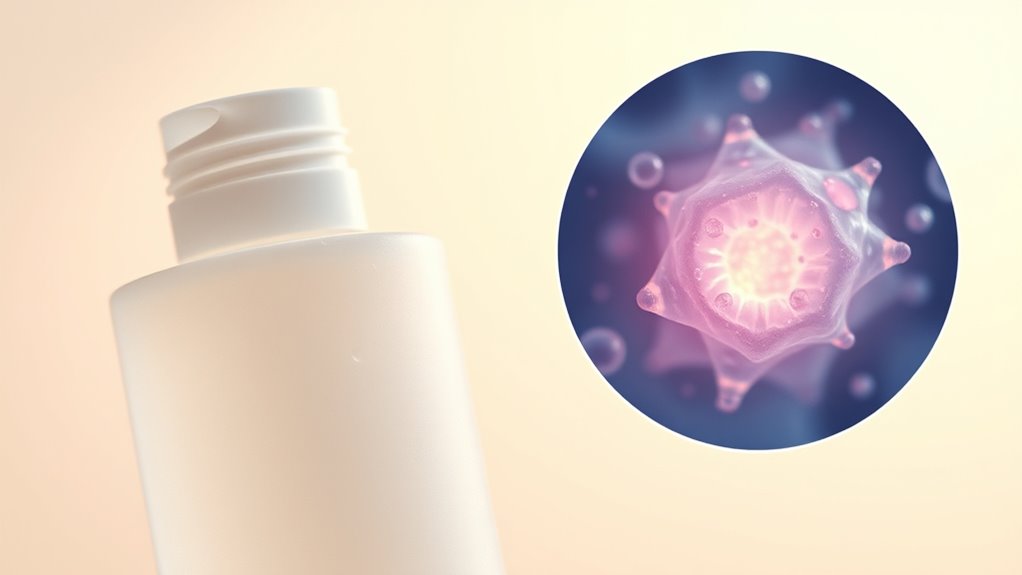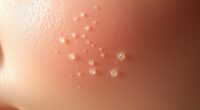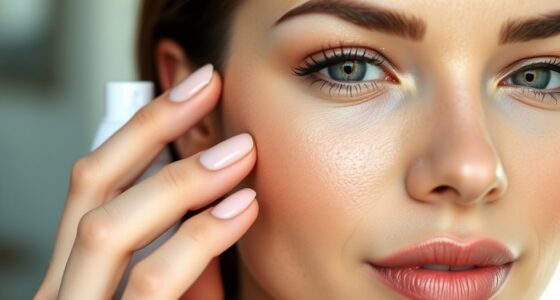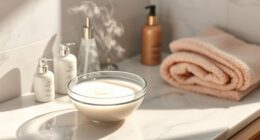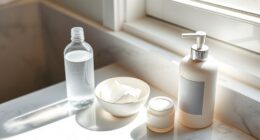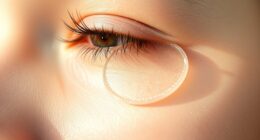Many clean beauty claims lack strong scientific backing, so it’s important to be cautious. Brands that truly support their statements provide transparent ingredient lists, sourcing details, and safety testing results. Just because a product is labeled “clean” doesn’t mean it’s proven safe or effective through science. To make informed choices, look for brands that prioritize transparency and rely on verified research. Keep exploring to uncover what truly supports trustworthy clean beauty claims.
Key Takeaways
- Not all clean beauty claims are supported by scientific evidence; some rely on marketing rather than data.
- Transparent brands often provide ingredient safety data and research to substantiate their claims.
- Natural ingredients are not automatically safer; scientific testing is needed to verify safety profiles.
- Independent testing and certifications can help verify the scientific backing of clean beauty products.
- Critical evaluation of marketing claims and seeking evidence-based information are essential for informed choices.
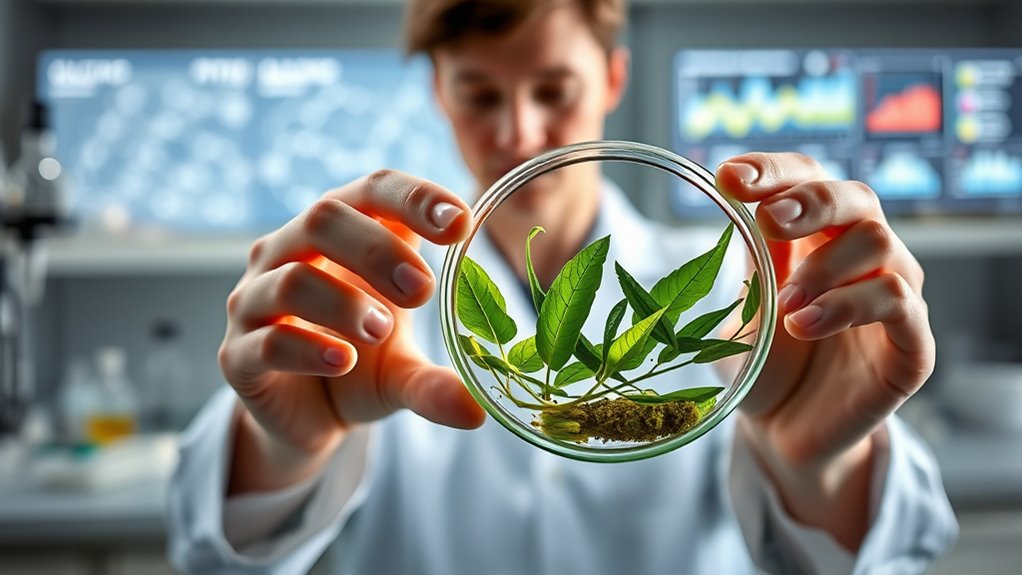
Have you ever wondered what “clean beauty” really means? It’s a term that’s become increasingly popular, but its definition often feels vague or even misleading. At its core, clean beauty suggests products made with safer, more natural ingredients, but how do you know if that’s actually the case? One of the key concerns is ingredient safety. When you pick a product labeled as clean, you want to be sure that the ingredients listed are safe for your skin and overall health. Unfortunately, many brands rely on marketing promises rather than scientific evidence, making it tough to distinguish between genuine safety and clever advertising. That’s where marketing transparency comes into play. Truly transparent brands openly share details about their ingredients, sourcing, and safety testing methods. They don’t hide behind vague claims or complex jargon, which makes it easier for you to make informed choices.
However, the question remains: are these claims backed by science? The answer isn’t always straightforward. Some brands do invest in research and safety assessments, providing data that supports their claims. For example, they might conduct independent testing on their ingredients or formulations to verify that they are free from harmful chemicals. But many brands rely on simplified labels or certifications that don’t necessarily guarantee scientific validation. It’s essential to scrutinize these claims critically. Just because a product is labeled as “clean” doesn’t mean it’s free from all potentially harmful substances or that it has undergone rigorous scientific testing. You need to look for clear, evidence-based information rather than marketing buzzwords.
Furthermore, ingredient safety isn’t just about avoiding certain chemicals; it’s about understanding the science behind each component. Natural doesn’t always mean safe, and synthetic doesn’t automatically mean dangerous. Scientific research can provide insights into the safety profiles of ingredients, but this isn’t always communicated effectively on product labels or marketing materials. That’s why marketing transparency is so vital—brands that prioritize it tend to be more reliable because they back their claims with data rather than just appealing to trends. As a consumer, you’re responsible for digging a little deeper, asking questions, and seeking out brands that prioritize ingredient safety through verifiable science. Ultimately, the most trustworthy clean beauty claims are those supported by transparent practices and solid scientific evidence rather than just marketing hype.
Frequently Asked Questions
How Can Consumers Verify Clean Beauty Product Claims?
To verify clean beauty product claims, you should start by researching brands that prioritize ingredient transparency. Since consumer skepticism is common, look for clear ingredient lists and avoid vague labels like “natural” or “hypoallergenic.” Check for third-party certifications or testing results that support their claims. Reading reviews from trusted sources can also help you gauge a product’s honesty, ensuring you’re choosing items that truly align with your clean beauty standards.
Are There Specific Certifications That Guarantee Clean Beauty Standards?
You might wonder if there are certifications that truly guarantee clean beauty standards. Some certification programs focus on ingredient transparency, ensuring brands disclose their ingredients clearly. While these certifications can offer peace of mind, remember they aren’t foolproof. Always research what each certification entails, and stay cautious—some labels may not fully verify safety or ingredient quality. Trust but verify, and you’ll better navigate the clean beauty landscape.
Do Natural Ingredients Always Mean a Product Is Safer?
You might think that natural ingredients always mean a product is safer, but that’s not always true. Natural skepticism is healthy—just because something is labeled “natural” doesn’t guarantee safety. Ingredient transparency is key; you should check the full list of ingredients to understand what’s in your products. Some natural ingredients can cause allergies or irritation, so always do your research and trust proven safety before assuming natural equals safe.
How Does Regulation Differ Across Countries for Clean Beauty Claims?
While clean beauty claims evoke trust, international standards vary widely, creating regulatory challenges. You’ll find some countries enforcing strict rules to verify ingredient safety and marketing honesty, while others lack clear guidelines, risking misleading claims. This inconsistency makes it harder for consumers to differentiate genuinely clean products from those that simply market themselves as natural. Staying informed helps you navigate these complex regulations and choose products backed by credible standards, no matter where you shop.
What Scientific Studies Support the Safety of Clean Beauty Ingredients?
You’ll find that scientific studies, including clinical trials, support the safety of many clean beauty ingredients. Researchers examine ingredient safety by testing for skin irritation, allergenicity, and toxicity to guarantee they’re safe for consumers. When choosing products, look for brands that reference clinical trial results or independent testing to verify ingredient safety. This scientific backing helps confirm that clean beauty claims are genuinely backed by evidence.
Conclusion
Ultimately, steering the world of clean beauty is like chasing the elusive green light—promising but not always within reach. While some claims are rooted in science, others resemble the fading glow of a mirage, tempting yet unproven. Stay vigilant, ask questions, and remember that true transparency is the lighthouse guiding you through the fog. Just as Gatsby yearned for clarity, seek out brands that genuinely back their promises with solid evidence.
